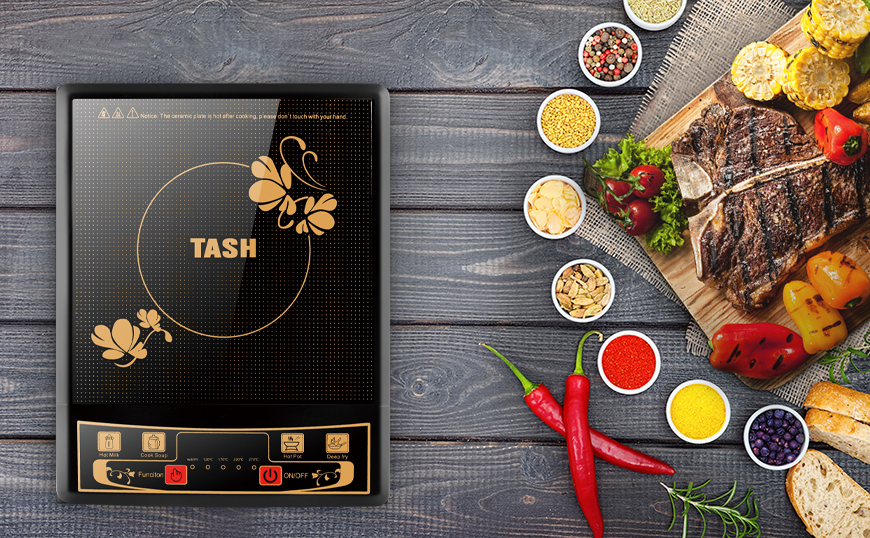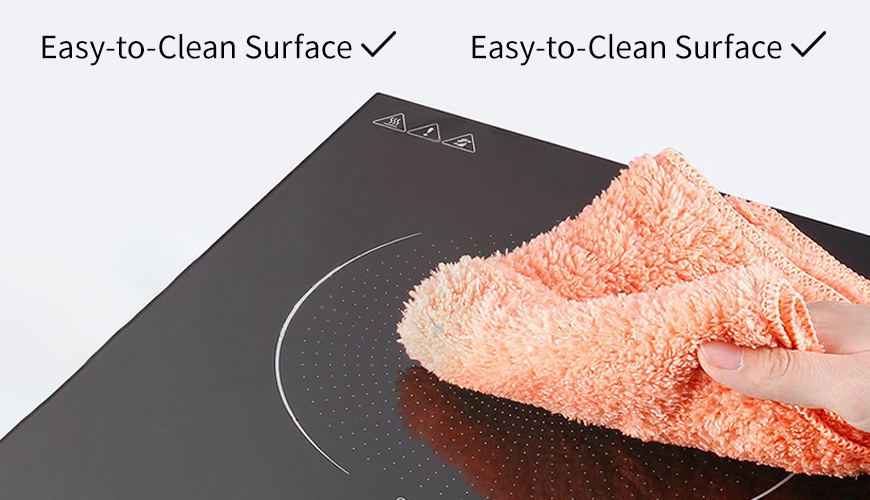What Is an Induction Cooker?

What Is an Induction Cooker?
Gas cooktops burn gas to heat POTS or pans. The pan gives off heat and cooks food. Ceramic cooktops heat elements through an electric current, which then heats the pot and cooks the food. Ceramic cooktops heat elements through an electric current, which then heats the pot and cooks the food.
Induction cookers, however, differ from these familiar heating methods. Induction cookers use electromagnetic energy to cook food. Heat is not transferred from gases or components. The cooking container (pot, pan, etc.) itself becomes the original generator of cooking heat.
An induction cooker can detect the presence of a pot (or whether the contents of the pot are boiled dry) because it is generated by an electric current that can be monitored for power absorption. The surface is made of a ceramic/glass material that conducts heat poorly, so once the pan is removed, it usually stays cool to the touch. Less heat transfer also makes it more energy efficient.

How Does Induction Cooking Work?
Induction cooking is done by heating a cooking vessel by induction rather than by heat conduction through a flame or electric heating element. Cooking containers must be made of or contain ferromagnetic metals, such as cast iron or stainless steel. The heat comes from inside the pot, making this method of cooking more efficient. Therefore, you need to make sure that your pan is suitable for use on induction hobs. Copper or aluminum pots will not work unless an additional magnetic layer is added to the bottom. The best way to check if your pan is workable is to see if the magnet sticks to the bottom of the pan!
Under the ceramic plate of the induction cooker is a copper wire coil. When a cooking pot is placed on it, alternating current is passed through it. This generates an oscillating magnetic field which induces magnetic flux and creates eddy currents in the iron pot, which act like the secondary winding of a transformer. It is heated by eddy currents flowing through the resistance of the pot. It has a good energy-saving effect. Safety is also an important aspect - there are no open flames, making fire extremely unlikely.
A pot of water boils in almost half the time of a normal gas stove. Induction stoves can also extend the life of POTS and pans because they are in more contact with the heat underneath and the current keeps flowing through the pans. This will stop your pan from creating hot spots, which in turn can burn or scorch the food.

What Are the Advantages and Disadvantages of Induction Cooker?
Advantages:
Instant temperature change: When you adjust the temperature, the change is immediately reflected.
Safety: The surface will not heat up, only becomes as hot as the pan. In most cases, it is safe to touch the pot immediately after removing it.
Easy to clean: Flat, smooth ceramic surfaces can be easily wiped clean with a rag. Spilled food doesn't burn because the surface doesn't heat up.
Energy efficient: Low current, almost no transfer heat loss.
Disadvantages:
Buzzing sound: There may be a tiny buzzing noise associated with the magnetic field when used.
Expensive: Induction cookers are more expensive than gas cookers.
The inflexibility of cookware: You may need to purchase a new set of cookware, as induction cookers cannot be made of aluminum, glass, Pyrex, or copper. High-grade stainless steel and iron are good conductors of heat.
Susceptible to damage: Sliding and slamming pans can damage glass ceramic cooktops.

What Pans to Use on Induction Hob?
Suitable | Inappropriate |
Cast Iron | Aluminum |
Enameled Cast Iron | All-copper |
Stainless Steel(Not All Types) | Glass |
To be able to be used with induction cookers, applicable POTS must have a magnetic base, generally with induction markers on the bottom.
That is, the bottom usually carries a helical spring logo indicating that it is suitable for use on induction ovens, iron, or stainless steel cookware.

How To Choose the Good Induction Cooker?
Select Induction Stoves According to Family Size:
If you have a larger household, the higher the wattage you should choose.
Use the Right Cookware:
When you buy an induction cooktop, it comes with a range of utensils and pans for the base of the cooker. However, when you buy appliances randomly, it affects the heating aspect because the heat will only travel in certain areas.
Power Output:
The power output of an induction cooker affects how fast it heats and how fast it cooks food. If you plan to cook a large number of dishes, you will need an induction cooker with high power.
Safety Features:
Look for induction stoves with safety features such as overheating protection and child locks.
Price:
Induction stoves can be more expensive than gas or electric stoves. Consider your budget when choosing an induction cooker.
Summary:
Obviously, induction cookers are the ideal choice in terms of cost, efficiency, safety, and power consumption.
Compared with gas stoves, the difference in power consumption and energy efficiency is small, but induction stoves are a better choice in the long run. It can save you money and health without affecting food quality, cooking time, and indoor air quality. Welcome to choose kitchen appliances at Bestsuppliers.com.

